BRIAN STILLMAN – Interview
The director of the film, Brian Stillman, has been a 15yr. professional journalist, a writer of Guitar World, Future Music, Super 7, Revolver magazine and the New York Post. In 2007, he did his first documentary, Toys Are Us: A Revolution in Plastic, which focused on the designing of toys. Brian is also a die-hard collector of toys from the 1930′s-1960′s. He is a huge Star Wars, Star Trek, and Dr. Who fan as well. And a very talented filmmaker as I have now seen for myself.
Out of all the topics for a documentary, what attracted you most to do this one?
As a filmmaker, I’m driven by the topics that inspire me — and as a collector, I’m pretty darn inspired by Star Wars toys! But to understand why I chose to make this movie, I need to give you a bit of back story.
I first saw Star Wars in the movie theater at a re-release in 1979 — I was four years old — and was hooked from the moment the blockade runner first soared across the screen. I had a lot of the toys growing up, but as I got older, I moved on to G.I. Joe figures, Transformers, and other mid- to late-Eighties toys. I continued to love the original trilogy, though, and would watch it all the time on VHS.
In my late Twenties, I started collecting vintage space toys — robots and ray guns from the 1930s through the 1960s. I’ve always been a huge science fiction fan, especially science fiction from the genre’s so-called Golden Age, and these toys are a natural extension of that. While I still loved Star Wars, the toys were just a little too modern for me.
But then one day about five years ago I was at a store in New York City called Love Saves the Day (sadly, it’s now gone) and they had an amazing selection of Star Wars toys for sale. For some reason, at that moment, a switch was flipped in my brain and I was struck with this wonderful feeling of nostalgia for the toys. It wasn’t long before I started picking some up as a side collection to all the other space toys.
I’m the type of collector who likes to learn as much about the things I collect as possible. I bought all the books I could find, including Steve Sansweet’s “From Concept to Screen to Collectible.” I figured that someone had to have made a movie, so I also went looking for that… Only to discover that, nope, there weren’t any documentaries out there.
So I figured, okay, I’m a journalist, I do video work, if no one’s made this movie yet, maybe I’ll take a crack at it. If nothing else, it’ll be a great way to learn a LOT more about the hobby. And if all goes well, I’ll have something that other people might find useful and entertaining as well. And that’s my (not-so-secret) secret origin.
What was your first Star Wars figure/toy you ever got and Favorite Star Wars toy memory?
I can’t remember my first Star Wars toy — I was about four when I got my first figures. I do remember having many of the first 21 figures as a little kid, in particular Power Droid, R2, 3PO, Greedo, Luke, Storm Trooper, Hammerhead, and Chewbacca. I also remember my grandmother getting me an X-Wing pretty early on, and I distinctly remember having a Landspeeder.
One of my all-time favorite Star Wars toys, one I know I had early on, was the Imperial Troop Transport. I loved that it talked — it was like having the characters from Star Wars in my living room!
When making the movie, I had the chance to speak to the former Kenner designer who created the Troop Transport, Tom Troy, and it was a huge thrill. I’ve interviewed a lot of big names, from rock stars to movie stars to directors, to authors, to astronauts, and it was one of the few times I really had to work hard to not act like a fanboy. (Okay, I didn’t try too hard — I couldn’t help but geek out when Troy showed me all his early concept sketches for the Transport).
So many Star Wars fans out there, how did you narrow it down to handlful you did interview for the film?
I reached out to people who were chatty on places like Rebel Scum, The Imperial Gunnery, and Facebook, people who seemed to have interesting stories to tell. Some were people I met at collector get-togethers. One guy, Sam Perez, lives down the street from me. John Booth wrote “Collect All 21.” Gus Lopez, Chris Fawcett, Ron Salvatore, and Chris Georgoulias are all long-time collectors with a rich understanding of the hobby’s history. And Steve Sansweet is… well… Steve Sansweet! They’re all people who crossed my path to various degrees and who, when I reached out to them, agreed to be in the film.
I ended up interviewing a few more people who unfortunately never made the final cut. They all had great stories and wonderful collections, but the reality of documentary making is that even some of the best interviews get left behind for any number of reasons. Though I do have plans to use lots of them in mini videos that will eventually end up on our web site.
What was your main goal you wanted to achieve about this film?
I just wanted to make a film that accurately portrayed the hobby and entertained people along the way. It was important to get to the history, to show where the toys came from and why they created such a paradigm shift.
Did you contact Lucasfilm for the rights or ask anyone there to appear in the film and did they help in any way?
I reached out to Lucasfilm in the optimistic hope that George Lucas would want to sit down for an interview, but I never did hear back. I wasn’t too surprised… Ha ha.
How did the film come about and was it hard to get off the ground?
I already talked about how I decided to make the film, so that covers the first part of the question. Getting it off the ground, so to speak, was surprisingly easy. I have a good friend named John Alvarez, and he helped me early on to meet people like Gus Lopez and Ron Salvatore, both of whom provided much of the narrative running through the film. Gus helped me contact some of the former Kenner employees, as well as Steve Sansweet. And it just spiraled from there. After that, it’s all logistics — creating a budget, planning interviews, coordinating trips, etc. As the film built up momentum, a lot of things would fall into my lap. People would hear about it and either volunteer to be interviewed or suggest people who might be fun to interview. They’d send me old photographs or other assets to be used in the film. Every collector I met was a well of information and they all stepped up to answer any background questions I had. Having access to such a great community helped a lot.
The trickiest part of a movie like this is logistics. We’d travel to Seattle and interview seven people, or go to Ohio to speak with nine or 10 people. Planning all those interviews, making the most of the time and maximizing the budget and trying to be efficient is tricky stuff. Not my forte! But I made it work.
I have to give credit to my senior producer/production designer/jack-of-all-trades assistant Karl Tate. He not only created a lot of the artwork in the film (including the DVD cover) but he also went to most of the interviews and helped keep things running smoothly.
What is your greatest moment so far with the success Plastic Galaxy and will this film be hitting the Film Festivals anytime soon?
The greatest moment for me was simply getting it out the door. After such a long production period — three years! — it was nice just having people finally get to see it.
Plastic Galaxy will be in a few film festivals and at a couple conventions in the coming months, and people can find out more about them as they’re announced. Check our web site or facebook page for details.
I know you are a Dr. Who and Star Trek fan, could we possible see another documentary on fans of those toys?
No, not likely. I do love Dr. Who and have a pretty decent vintage Dalek collection. I’m also a fan of the original Trek series (and Karl Tate, previously mentioned, is a HUGE Trek fan). But they’re not movies I’m too interested in making. There are many reasons, but mostly I don’t have quite the same level of passion for those toys, and if I’m not 100% into a film, it’s hard for me to spend that much time — and money — making it.
Instead, I’ll leave those subjects to others… C’mon people, get on it! I’ll buy copies!
Why didn’t you focus on the Prequel films as much as you did the original trilogy?
Because Kenner’s story is the origin story, and everything that came after is the result of the company’s efforts and innovations. Today’s toy industry is a machine, a well-designed mechanism that includes design, production, marketing, and licensing. The story behind today’s toys is pretty simple: They exist because that’s the way the world works. Most toys today are licensing tie-ins, and most movies work toy lines into their underlying marketing and promotional plans. And Star Wars toys are a well-established property; no one’s surprised to see them on the shelves.
The real narrative is in how and why that’s the case. The story behind the toys — and that lies in the story of the original Kenner line.
If today’s toy industry is a machine, Kenner created that machine. They absolutely shifted the paradigm, and the toy industry was forever transformed by their work. (The movie industry, too!) What’s even more amazing is that Kenner created the machine on the fly… It’s like tinkering with a car engine while zooming down the highway! And even CRAZIER, they did it without even knowing whether they were heading towards a cliff! Pretty fantastic stuff!
At the same time, the success of today’s toys lies in the creation of those early fans of the Kenner action figures. They were the pioneers, the ones who were in love with the figures before they were considered collector’s items, before the history was charted, before collecting toys was cool. And when they grew up, they carried their love of toys forward, and instilled it in their kids, and I think really helped create today’s world were toys and toy collecting are pretty mainstream.
As a die-hard fan, what was it like meeting these creators and designers of such amazing toys that were part of our childhood and what was it like seeing these huge collections?
I’ve been a journalist for a long time, and I’ve covered a lot of beats. I’ve met all sorts of famous people — from actors to directors to musicians, athletes, authors, politicians, astronauts — and infamous people (politicians again, gang members, etc.). And through it all, I’ve always maintained a professional, detached attitude that allows me to do my job without bias.
All that went out the window when I met the Kenner designers. I completely geeked out. I was a fanboy. I tried to hold it together and failed miserably. It was just such a thrill to meet these guys, to listen to their stories, to know they were responsible for some of my fondest childhood memories and the toys I still love today. It was just so much fun, and I’m really glad I had the opportunity to sit down with them.
Meeting the collectors was also a great experience. Seeing their toys, seeing how they approached the hobby and collecting in general, spending time discussing a subject I love so much — believe me, there are MUCH worse ways to spend a day! Many of the collectors have since become really good friends of mine. I see a bunch of them all the time, and talk to the rest of them all the time online or on the phone. I can honestly say that the best part of making the film was also making all those friends.
Was there any one piece of Star Wars toy collectibles you saw during the making of the film that made you impressed above all others?
Everyone asks me that and it’s a tough question to answer. Everyone’s collection was just incredible, and each was filled with some insanely cool toys. My own collection is actually pretty small so I was constantly seeing toys that I’d love to have myself. And even some of the toys that fell outside my collection — like a lot of the modern stuff — still impressed me a lot.
That said, I love prototypes and pre-production items, so the collections of people like Gus Lopez, Chris Fawcett, and Vic Wertz and Lisa Stevens really blew me away. It’s impossible to point to any one thing and say, “That! That right there! That’s my favorite!” because it’s all so freakin’ cool.
But I’ll admit, my jaw hit the floor when I saw Vic and Lisa’s model of the Ewok Village playset. It’s not even a toy I particularly love, but the model is made out of sticks and stones and bark and grass, and the level of detail is just amazing! The fact that it even survived all this time is a miracle.
I’m also a big fan of lightsabers — who isn’t? — and I fell in love with the original art that shows how to use the lightsaber in the 3 3/4-inch Luke Skywalker figure. It’s the art you see on the back of the 12-back card, and it’s hanging in Gus Lopez’s home. It’s just beautiful!
But it wasn’t only prototype material that impressed me, like I said. I had the chance to see a fully assembled Death Star play made by a British company called Palitoy. It’s very different than the version released by Kenner. Palitoy’s is made from wonderfully illustrated chipboard panels and, frankly, I think it’s a LOT cooler than the toy we had here in the States. It’s definitely a piece I’d like to add to my own collection, though I’ve no idea where I’d be able to set the thing up!
You are a collector of toys from the 1930′s – 1960′s, would you say you have a huge collection and what was the biggest fine you discovered?
I guess that depends on how you define “huge.” My collection isn’t the biggest one out there, but it does take up one room of my apartment, and it’s certainly bigger than I ever imagined it’d be when I first started collecting!
My collection focuses on robots and ray guns, as well as prototypes and pre-production material from the 1940s and 1950s. It’s a tough collection to build (especially the pre-production material) but that challenge is part of what makes it fun.
How fun was it making the “Know Your Lightsaber” video on the Special Features on the dvd and memories you can share with us?
Making that video was a lot of fun, though it’ll probably be the last time you see me on camera. I’m definitely not an actor! But it was a nice day hanging out with friends and just goofing around. The kid who cut my hand off is a good friend’s son; I’ve known the woman who shot the piece and co-directed it, Cheyenne Picardo, for a long time; all of the toys are from my own collection. Not a bad way to spend the day.
One funny story: When the kid cut my hand off, I told him to just swing his lightsaber as hard as he could, and to hit my wrist. He’d stop short and it didn’t look good, so I really encouraged him to go for it. The lighsabers don’t hurt.
Until you’re on the fifth or sixth take. That’s when I started to second guess things… my wrist was getting whacked repeatedly by a plastic blade and yeah, eventually I started to feel it. Luckily, his dad is an orthopedic surgeon and he promised me I wasn’t doing any lasting damage. Once the kid heard that, he gleefully went back to smashing my wrist with the lightsaber. You’ve got to suffer for your art, man.
Final question, What’s next for Brian Stillman?
Right now I’m in the middle of promoting the film, and also doing my day-to-day work as a video producer. I’m beginning to think about the next film — I can’t reveal what it is yet, but it’s definitely not about toys or toy collecting. It’s time to explore some of my other interests…
I want to thank Brian Stillman for taking the time from his busy schedule to do this interview and the opportunity as well as seeing his film, I enjoyed it very much! If you would like to see Plastic Galaxy, go to the webpage above or at their fan page on Facebook and order your dvd.


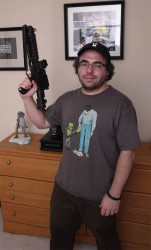
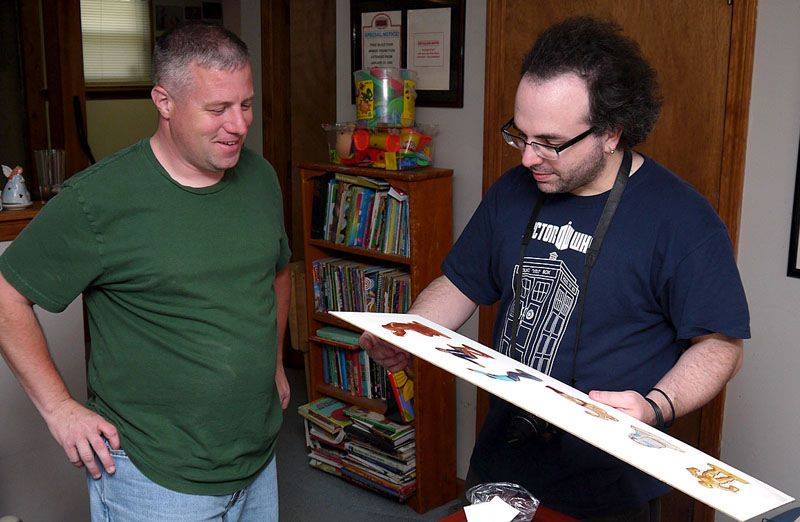
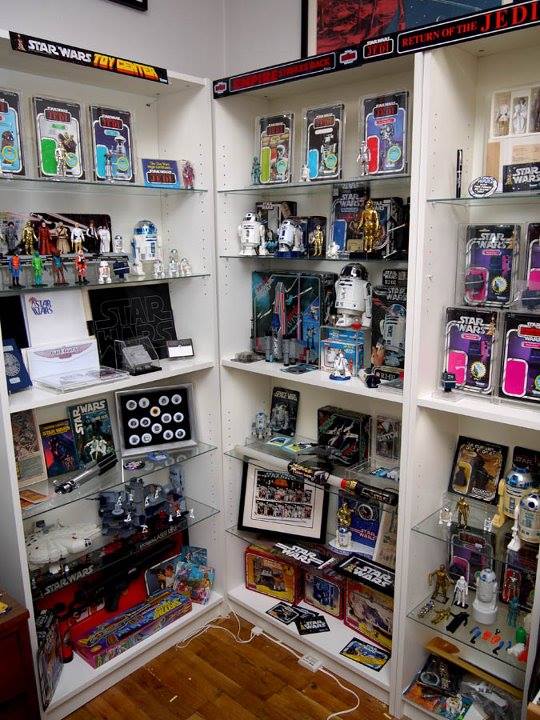

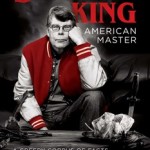

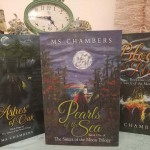 THE SISTERS OF THE MOON Trilogy – Samantha Chambers
THE SISTERS OF THE MOON Trilogy – Samantha Chambers (Italiano) UNA SPIEGAZIONE PER TUTTO – Gábor Reisz
(Italiano) UNA SPIEGAZIONE PER TUTTO – Gábor Reisz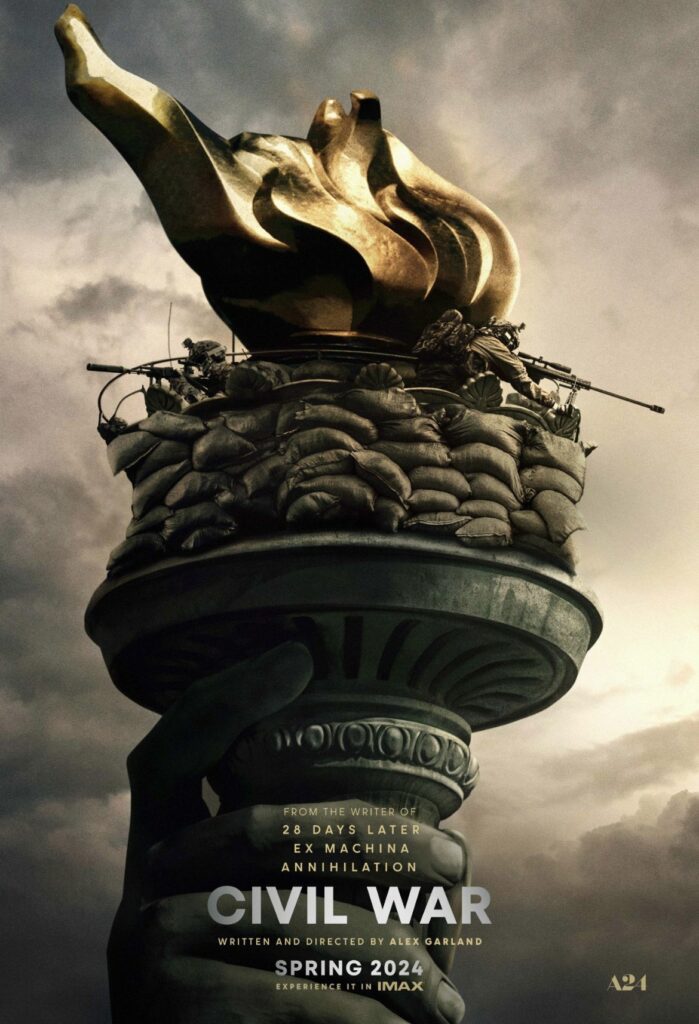 (Italiano) CIVIL WAR – Alex Garland
(Italiano) CIVIL WAR – Alex Garland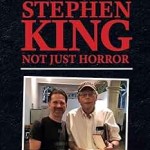 STEPHEN KING NOT JUST HORROR – Hans-Ake Lilja
STEPHEN KING NOT JUST HORROR – Hans-Ake Lilja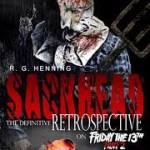 SACKHEAD:The Definitive Retrospective on FRIDAY THE 13th PART 2 – Ron Henning
SACKHEAD:The Definitive Retrospective on FRIDAY THE 13th PART 2 – Ron Henning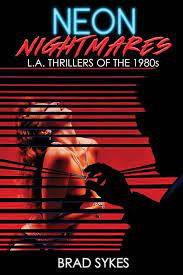 NEON NIGHTMARES: L.A. Thrillers Of The 1980′s – Brad Sykes
NEON NIGHTMARES: L.A. Thrillers Of The 1980′s – Brad Sykes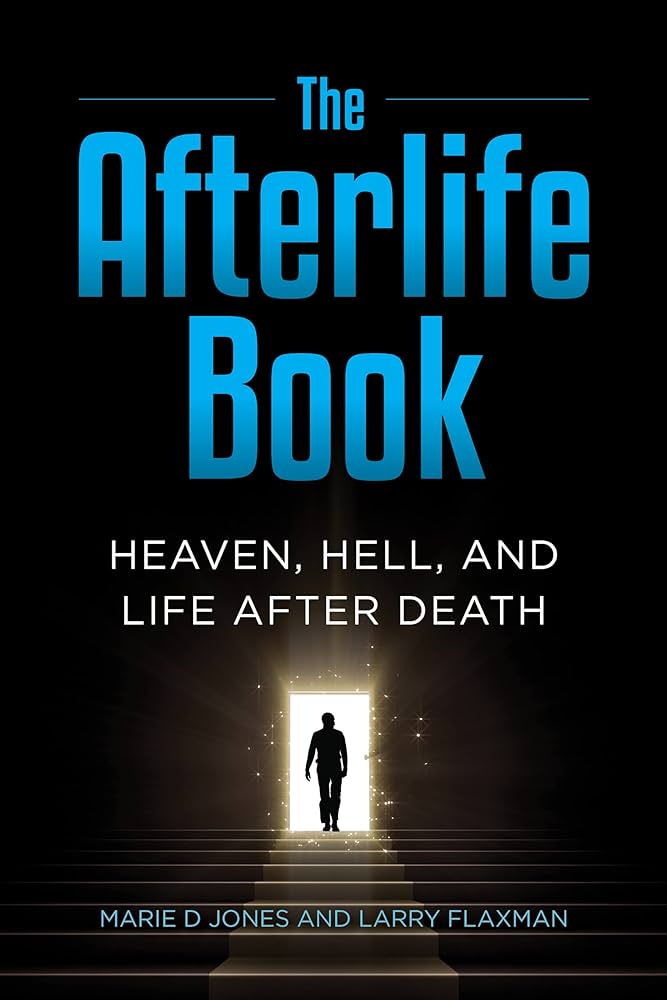 THE AFTERLIFE BOOK: Heaven, Hell, And Life After Death – Marie D. Jones & Larry Flaxman
THE AFTERLIFE BOOK: Heaven, Hell, And Life After Death – Marie D. Jones & Larry Flaxman POPULATION PURGE – Brian Johnson
POPULATION PURGE – Brian Johnson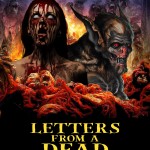 LETTERS FROM A DEAD WORLD – David Tocher (review & interview)
LETTERS FROM A DEAD WORLD – David Tocher (review & interview)